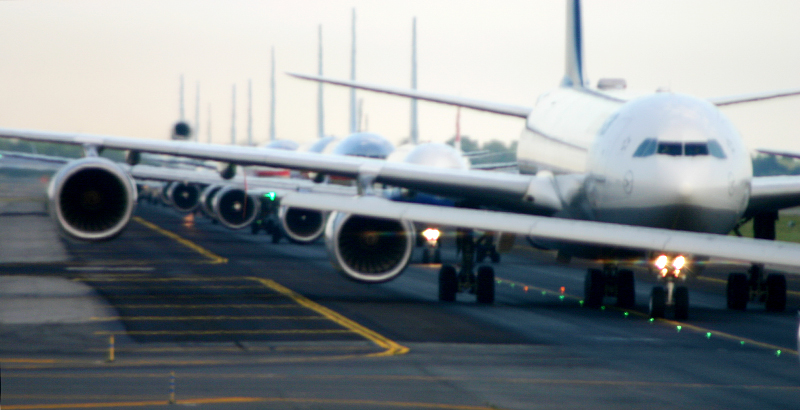“F aux outrage from Members of Congress mixed with well-rehearsed answers from airline representatives made for a lovely cocktail of sleep-inducing TV viewing” is what Matthew Klint of Live and Let’s Fly wrote in this article pertaining to airline executives responding to inquiries by members of the House of Representatives of the United States during the Oversight of U.S. Airline Customer Service hearing of the House Transportation Committee…
…and having worked on Capitol Hill, Klint stated that we learned nothing from the hearing and feels “very comfortable in stating that the nauseating, grandstanding session by Members of Congress served little purpose than to capture soundbites for re-election commercials.”
Perhaps he is correct, as InsideFlyer member ahappyelite posted this comment pertaining to the decision by American Airlines to reduce the pitch in seats aboard its fleet of Boeing 737MAX aircraft — of which 100 are on order — from 31 inches to 30 inches in most of the economy class cabin; and to 29 inches in three rows in order to squeeze in 174 seats: “As they baldfacedly swear under oath they are working to make things better in truth and in fact they are working every day to make things worse.”
The Airlines Have Not Learned Their Lesson — Yet
If there was anything to learn from the debacle in which a passenger was forcibly removed by law enforcement officers from an airplane operated by United Airlines — and was injured in the process — the lesson was that corporate policy is not always perfect and that employees should be trusted to use their judgment on a case-by-case basis. There are many variables to how this particular incident could have been peacefully resolved — and opinions on all sides are vociferously expressed — but one solution could have been to simply offer enough monetary compensation to convince four passengers to voluntarily leave the airplane. Unfortunately, none of the employees had the authority to execute that solution to an amount which was beyond what standard policy dictated…
…and the result has been disastrous for United Airlines: the loss of millions of dollars; the significant hammering of its already tarnished reputation as an airline; the necessity of executives performing damage control; and the aforementioned hearing before members of Congress.
Looking back, offering several thousand more dollars to each of four passengers would have been a relative bargain.
There are those people who thought that the passenger was wrong to not follow orders from both members of the flight crew and from law enforcement officers. Under normal circumstances, that would be the proper policy — but to force a paying customer out of his seat aboard the airplane when he did nothing wrong prompted him to protest against what many now consider an unfair policy; and official public apologies have been offered from United Airlines more than once…
…but was that protest a result of not understanding why he was being forced to leave the airplane? Could it have been the result of the increased stress which seems to be prevalent aboard airplanes in recent years due to corporate cost cutting and the pursuit of increasing revenues and profits in the name of the almighty dollar?
When is Enough Enough — or Too Much?
The goal of most companies is to increase revenues, profits and positive cash flow as much as possible. In the case of airlines, the ideal scenario would be no inches of pitch between seats — or, perhaps, no seats at all — no food or entertainment; and no members of flight crew. Airplanes would be packed full of customers paying full price.
That sounds extreme; but how many people would actually voluntarily involve themselves in that scenario? Assuming none is the answer, that threshold must be moved to a point where the customer feels that he or she is getting good value for the money he or she pays — but that threshold is set at different limits for different people.
With American Airlines reducing legroom aboard part of its fleet of airplanes, some people will consider the threshold too high to further patronize the airline. Others will still be customers who are not as happy. Still other customers might not care at all…
…but when is that threshold set to the point of diminishing returns? Is cramming several more passengers aboard an airplane really worth the increased stress of passengers experiencing the further degradation of benefits in the form of decreased comfort? Why would someone choose to fly as a passenger aboard one of those affected airplanes operated by American Airlines when a seat costs less money with Spirit Airlines — but now the difference in seat pitch is minimal at best? What if another viral incident occurs aboard an airplane operated by American Airlines as a result of squeezing more passengers into an airplane? Could stress on the part of both customers and members of the flight crew as a result of corporate initiatives designed to pressure employees to extract more profits from customers have contributed to this incident aboard an airplane operated by American Airlines in which an employee was accused of hitting a mother of twins with her stroller?
Some people opine that if you want more comfort, you should stop complaining and pay for it with your money by upgrading yourself. That is an easy argument to state; but when passengers are used to paying a certain price for an experience which is perceived to have deteriorated — but the price is not reduced — do those passengers not have a right to complain?
Summary
There is no definitive answer to those questions due to a variety of factors. For example, the comparison between American Airlines and Spirit Airlines is completely valid if only comparing seat pitch — but what about schedule frequency, customer service, choices of destinations, and frequent flier loyalty programs? Those four examples are but a myriad of factors which comprise the overall flight experience for a passenger.
When will the wringing of passengers in the economy class cabin end? When does it become too much?
Airlines based in the United States have vehemently opposed the addition of routes between Europe and the United States with Norwegian Air Shuttle — to the point of complaining to lawmakers and demanding protectionist measures that would prevent domestic carriers from being negatively affected. The airlines cannot have their cake and eat it too. Rather than attempting to force legislation to protect their interests, they need to differentiate their products from those offered by competitors — and reducing legroom is certainly not one of the ways to do it.
Although the chances of your flight being uneventful are very good, the spate of incidents in recent months which have become viral may be one valid indicator that the airlines have already pushed too hard and should consider giving back some of the benefits and amenities which made flying more enjoyable in the first place for customers.
Photograph ©2008 by Brian Cohen.

